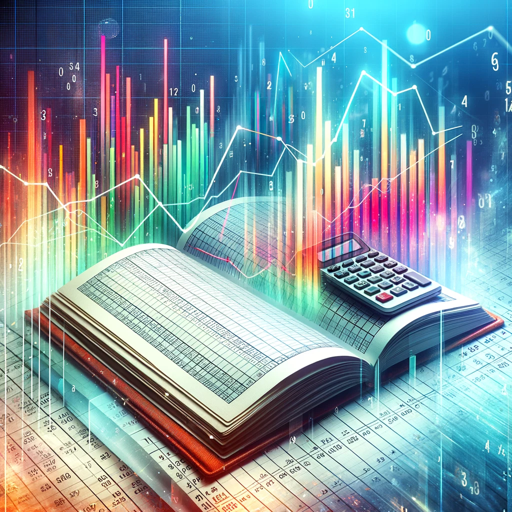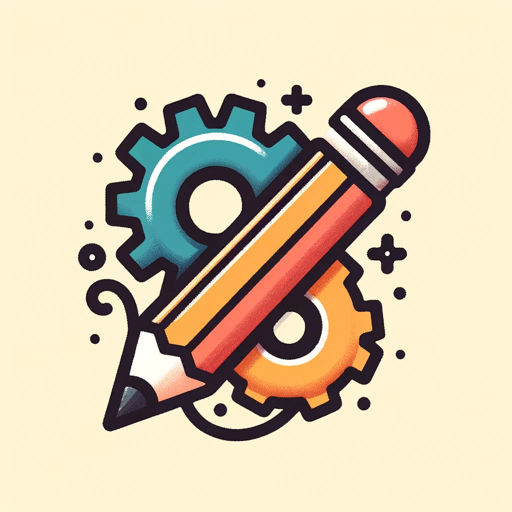Business and Data Analysis-AI-powered data analysis tool
AI-driven insights for business growth
Analyze this CSV for insights
What are the potential uses of this data?
What resources will we need for a data project?
Explain the significance of these data findings.
Generate a CSV Sample
Related Tools
Load More
Finance (Business Finance)
Business Finance Expert. Helps you with everything Business Finance (knowledge, charts, graphs, equations).

Statistic & Data Analyst
Statistic and Data Analyst assistent

Business Analyst
Expert in business analysis and documentation.

Data Engineering and Data Analysis
Expert in data analysis, insights, and ETL software recommendations.

Business, Research Insights, Industry analyses
Business Trend Analyst for Entrepreneurs

Business Analysis Assistant
Welcome to the Business Analysis Assistant GPT, your AI partner for enabling organizational change. Expert in defining needs, proposing solutions, and delivering stakeholder value, it's your go-to for optimized business analysis.
20.0 / 5 (200 votes)
Overview of Business and Data Analysis
Business and Data Analysis serves as a comprehensive tool designed to assist users in transforming raw data into actionable insights. Its primary functions include data exploration, processing, and interpretation, which can help identify trends, correlations, and potential issues within datasets. Business and Data Analysis is rooted in techniques like statistical analysis, machine learning, and visualization to improve decision-making processes across industries. For example, in a retail scenario, analyzing customer purchasing patterns can help optimize inventory, enhance marketing strategies, and improve customer satisfaction. The main purpose is to enable organizations to leverage data as a strategic asset, guiding them in informed decision-making and process optimization.

Key Functions of Business and Data Analysis
Exploratory Data Analysis (EDA)
Example
A marketing team needs to understand customer behavior to optimize their campaigns. By running EDA on customer data, they uncover key demographic patterns and preferences.
Scenario
The team uses tools to generate visualizations, summary statistics, and insights on how different customer segments respond to marketing efforts, enabling more targeted and effective outreach.
Data Cleaning and Preprocessing
Example
A financial services company needs to cleanse transaction data that has missing values and outliers to prepare for modeling.
Scenario
The company applies Business and Data Analysis to detect and impute missing data, remove duplicates, and standardize transaction formats. This ensures data quality, leading to more reliable predictive models and reports.
Predictive Analytics and Forecasting
Example
A logistics firm wants to predict delivery delays based on past data to improve their supply chain management.
Scenario
By applying predictive algorithms, the firm can forecast which shipments are at risk of delays, allowing them to take proactive measures to reroute or adjust schedules, minimizing customer impact and optimizing operations.
Ideal Users of Business and Data Analysis
Business Analysts
Business analysts often deal with vast amounts of operational and market data. They benefit from these services by quickly uncovering trends, inefficiencies, and opportunities. With the right tools, analysts can offer actionable recommendations to leadership based on data-driven insights.
Data Scientists and Engineers
Data scientists and engineers rely on Business and Data Analysis for handling complex datasets. The service helps them preprocess and analyze data efficiently, so they can focus on model building, algorithm development, and large-scale data transformation projects.

How to Use Business and Data Analysis
1
Visit aichatonline.org for a free trial without login, no need for ChatGPT Plus.
2
Upload your dataset in CSV format for analysis, ensuring it is clean and well-structured for optimal results.
3
Use the pandas profiling tool for comprehensive exploratory data analysis, which includes key statistics, missing data insights, and data distribution patterns.
4
Interpret the generated report, paying close attention to correlations, outliers, and potential data quality issues highlighted.
5
Leverage actionable insights and recommendations from the analysis to make data-driven decisions for business strategy or research.
Try other advanced and practical GPTs
AccountingGPT
AI-powered accounting guidance, simplified

demiurge.engineer
AI-Powered Custom Code Solutions

Ngữ pháp tiếng Anh GPT
AI-powered English grammar assistant for Vietnamese learners.

MJ Web/DTP Designer
AI-powered designs, instantly at your command.

Academic writing APA7
AI-powered tool for mastering APA style.

Art Evolution
Create stunning visuals with AI.

Rust GPT
AI-powered Rust programming assistant

Boolean Wizard for Recruitment
AI-powered Boolean Search for Recruiters

Grammar Fixer
AI-powered grammar corrections for clear writing.
StoryGenius: Story Idea & Concept Designer
AI-powered tool for story creation
C.O.O.P.E.R.
AI-powered insights for smarter marketing

Book Reviewer
AI-Powered Detailed Book Reviews

- Data Analysis
- Academic Research
- Business Strategy
- Forecasting
- Market Analytics
Frequently Asked Questions about Business and Data Analysis
What kind of datasets can be analyzed?
You can analyze structured datasets in CSV format. The tool is designed to handle numerical, categorical, and mixed data types, making it versatile for various industries and use cases.
Do I need to have a data science background to use this tool?
No, the tool is user-friendly and provides clear insights through automatic profiling and reports, making it suitable for both technical and non-technical users.
How does the pandas profiling feature work?
Pandas profiling generates an in-depth report of your dataset, including key statistics, missing values, data distributions, correlations, and outlier detection. This helps you understand the quality and structure of your data quickly.
What are the common use cases for this tool?
Common use cases include business strategy optimization, academic research, financial forecasting, product development, marketing analytics, and operational performance reviews.
Can the tool identify hidden patterns in data?
Yes, the tool uses correlation analysis and other statistical methods to detect relationships and patterns within the data, offering insights that may not be immediately apparent.